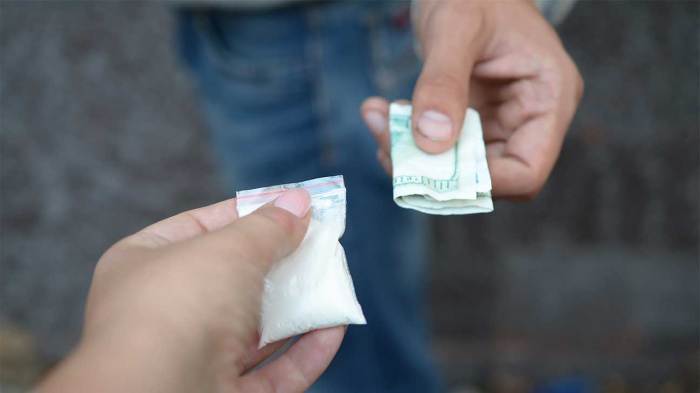How many grams in a kilo of coke? This seemingly simple question delves into a realm of measurement, purity, and practical applications. Join us as we unravel the intricate relationship between grams and kilograms, exploring the factors that influence the weight of coke and its significance in various fields.
From understanding the conversion formula to examining the impact of packaging and density, this comprehensive analysis provides a deeper understanding of the weight of coke and its implications.
Grams and Kilograms

Grams and kilograms are both units of mass in the metric system. The relationship between grams and kilograms is that 1 kilogram is equal to 1000 grams. This means that there are 1000 grams in 1 kilogram.
To convert grams to kilograms, you can use the following formula:
Mass (kg) = Mass (g) / 1000
For example, to convert 500 grams to kilograms, you would divide 500 by 1000, which gives you 0.5 kilograms.
Conversion Examples
- 1000 grams = 1 kilogram
- 500 grams = 0.5 kilograms
- 250 grams = 0.25 kilograms
- 100 grams = 0.1 kilograms
- 50 grams = 0.05 kilograms
Weight of a Kilo of Coke: How Many Grams In A Kilo Of Coke

A kilo of coke, also known as cocaine, is a significant quantity of the illicit substance. Its weight in grams can vary depending on several factors, including purity, density, and moisture content.
In general, a kilo of pure cocaine weighs approximately 1,000 grams. However, the purity of street-level cocaine can vary widely, ranging from 20% to 80% or higher. As a result, the weight of a kilo of cocaine can fluctuate depending on its purity.
Density
The density of cocaine also plays a role in its weight. Cocaine has a density of approximately 1.2 grams per cubic centimeter. This means that a kilo of cocaine would occupy a volume of approximately 833 cubic centimeters.
Moisture Content
The moisture content of cocaine can also affect its weight. Cocaine that has been exposed to moisture can absorb water, which can increase its weight. However, the moisture content of cocaine can vary significantly, and it is difficult to determine the exact impact of moisture on the weight of a kilo of cocaine.
Measurement Units
Cocaine, an illegal drug, is often measured and sold in various units. Understanding these units is crucial for law enforcement, medical professionals, and individuals involved in drug-related activities.
The most common units used to weigh cocaine are grams and kilograms. Grams are smaller units, while kilograms are larger units. The conversion between grams and kilograms is straightforward: 1 kilogram equals 1000 grams.
Accuracy and Precision
The accuracy and precision of measurement units depend on the weighing instrument used. Digital scales are generally more accurate and precise than mechanical scales. However, the accuracy and precision of both types of scales can be affected by factors such as calibration, environmental conditions, and the skill of the person using the scale.
It is important to note that the accuracy and precision of measurement units are not the same. Accuracy refers to how close a measurement is to the true value, while precision refers to how consistent measurements are when repeated.
In the context of weighing cocaine, accuracy is more important than precision. This is because even a small error in the measurement of cocaine can have significant implications for its sale, distribution, and consumption.
Packaging and Density

The packaging of coke can significantly impact its weight. Bulk coke, often transported in large quantities, is typically packaged in heavy-duty bags or containers to ensure safe handling and prevent spillage. These containers add to the overall weight of the coke, contributing to its gross weight.
Density, a measure of mass per unit volume, plays a crucial role in determining the weight of coke. Denser substances weigh more for a given volume compared to less dense ones. Coke’s density varies depending on its purity, moisture content, and particle size.
Higher purity and lower moisture content result in higher density, leading to a greater weight for the same volume.
Particle Size
The particle size of coke influences its density and, consequently, its weight. Smaller coke particles pack more tightly together, increasing the density and weight per unit volume. Conversely, larger particles have more voids between them, reducing the density and weight for the same volume.
Moisture Content
The moisture content of coke affects its density. Wet coke contains water, which has a lower density than coke. As the moisture content increases, the overall density of the coke decreases, resulting in a lower weight for the same volume.
Coke Purity

The purity of cocaine, also known as coke, significantly impacts its weight. Pure cocaine is a white, crystalline powder with a density of approximately 1.2 grams per cubic centimeter (g/cm³). However, street-level cocaine often contains impurities, such as cutting agents, adulterants, and residual chemicals from the production process.
Impurities and Weight, How many grams in a kilo of coke
Impurities can increase or decrease the weight of cocaine depending on their density. For instance, cutting agents like baking soda or cornstarch have a lower density than cocaine, making the overall mixture lighter. Conversely, adulterants like lidocaine or benzocaine have a higher density, increasing the weight of the cocaine.
The presence of residual chemicals, such as solvents or precursors, can also affect the weight of cocaine. These chemicals typically have a lower density than cocaine, reducing the overall weight of the mixture.
Practical Applications

The weight of coke is a crucial factor in various practical applications. From determining the amount of fuel needed for combustion to calculating the dosage for medical purposes, the precise measurement of coke’s weight is essential.
Coke in Industrial Processes
- Fuel for Combustion:In industries like steel manufacturing, coke is used as a fuel source. The weight of coke determines the amount of heat generated during combustion, which is crucial for maintaining optimal temperatures in furnaces and kilns.
- Metallurgical Applications:Coke is employed as a reducing agent in the extraction of metals from ores. The weight of coke is critical in controlling the amount of oxygen available for reduction reactions, ensuring efficient metal extraction.
Coke in Healthcare
- Medical Dosage:Activated charcoal, a form of coke, is used as an adsorbent to treat poisoning. The weight of activated charcoal determines the dosage administered to patients, ensuring optimal absorption of toxins.
- Dialysis:Coke is utilized in hemodialysis machines to remove waste products from the blood of patients with kidney failure. The weight of coke used in the dialysis process is critical for maintaining the correct concentration of activated charcoal, ensuring efficient removal of toxins.
Other Applications
- Water Filtration:Coke is used as a filtration medium in water treatment plants. The weight of coke determines the porosity and surface area of the filter bed, influencing the efficiency of water purification.
- Fertilizer Production:Coke is employed as a carbon source in the production of fertilizers like ammonium nitrate. The weight of coke is crucial for controlling the amount of nitrogen available for fertilizer synthesis.
Commonly Asked Questions
Is a kilo of coke always 1000 grams?
While a kilo is theoretically 1000 grams, the actual weight of coke may vary slightly due to factors such as packaging and density.
How does packaging affect the weight of coke?
Packaging can add weight to the coke, especially if it involves multiple layers or heavy materials.
What role does density play in determining the weight of coke?
Denser coke will weigh more than less dense coke, even if they have the same volume.